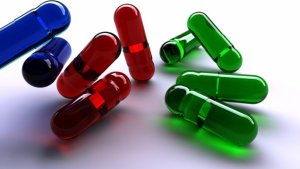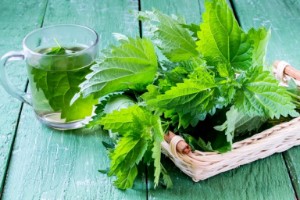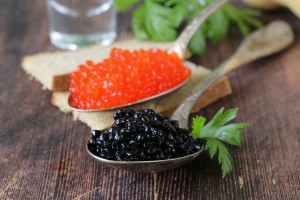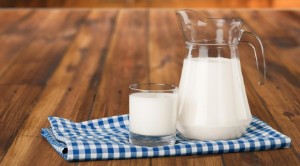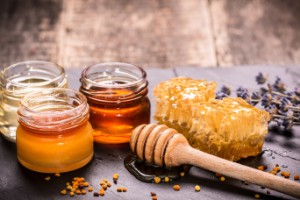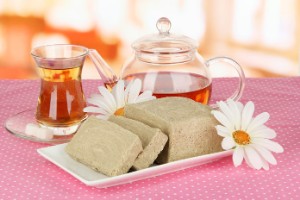What kind of meat should you eat to increase hemoglobin at its low level — Top 7 best types
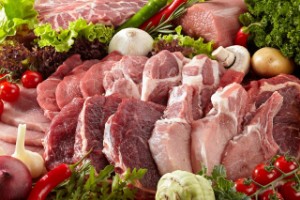 The main reason for low hemoglobin levels in the blood (against which anemia often develops) is iron deficiency, which is exactly the basis of the hemoglobin molecule (it is a compound of iron and certain amino acids).
The main reason for low hemoglobin levels in the blood (against which anemia often develops) is iron deficiency, which is exactly the basis of the hemoglobin molecule (it is a compound of iron and certain amino acids).
To quickly replenish the iron supply Doctors and scientists recommend include animal products in the diet. Offal products such as pork liver and lungs are especially rich in this element.
And what about meat? What types of it contain the most iron? Which varieties are most effective at raising hemoglobin and how many of them do you need to eat? Is it possible to do without eating meat at all? All the answers are below.
Content
Meat products and blood composition
 Meat contains a fairly large amount of iron. At the same time, it contains essential amino acids and B-group vitamins
-
all this increases the bioavailability of iron
, that is, it helps the body to digest and synthesize hemoglobin.
Meat contains a fairly large amount of iron. At the same time, it contains essential amino acids and B-group vitamins
-
all this increases the bioavailability of iron
, that is, it helps the body to digest and synthesize hemoglobin.
In some products of plant origin, this element is even more, but due to the lack of amino acids (proteins), only a small part of the iron from them is eventually absorbed.
For example, pork liver contains about 19 milligrams of iron per 100 grams, of which about 80% is absorbed. And dried porcini mushrooms contain as much as 35 milligrams of iron per 100 grams, but only 30% of them are digested.
6 most useful types
Any meat (both white and red) contains both iron and amino acids, so they are perfect for raising hemoglobin. But which meat contains the most of these elements? And how to cook it properly?
1. Rabbit meat
For 100 grams of such meat it is necessary 4.4 milligrams of iron . Of all the types, this is the best way to increase hemoglobin.
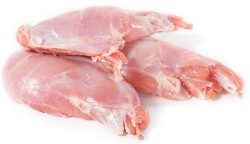 And this product is also easily digestible, so nutritionists often recommend including it in the diet when prescribing a gentle diet (when it is necessary to minimize the load on the gastrointestinal tract).
And this product is also easily digestible, so nutritionists often recommend including it in the diet when prescribing a gentle diet (when it is necessary to minimize the load on the gastrointestinal tract).
Accordingly, such meat will be the optimal choice for children with low hemoglobin levels (rabbit puree can be given from 9-12 months).
Rabbit meat also contains a minimum of fat and, accordingly, low-density cholesterol (which is commonly called "harmful"). Therefore, in the presence of chronic diseases of the cardiovascular system this particular type of meat is preferred. It is recommended to be consumed baked (using a microwave).
2. Goat meat
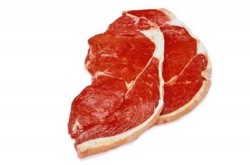 Contains only 2 milligrams of iron per 100 grams of product, but also includes a very wide range of spectrum of essential amino acids and B-group vitamins
(including folic acid, which stimulates the process of hematopoiesis). Nutritionists recommend using such meat in combination with fatty pork.
Contains only 2 milligrams of iron per 100 grams of product, but also includes a very wide range of spectrum of essential amino acids and B-group vitamins
(including folic acid, which stimulates the process of hematopoiesis). Nutritionists recommend using such meat in combination with fatty pork.
And due to the presence of rare amino acids in the composition, goat meat accelerates regeneration processes using protein. Therefore, it is preferable, for example, in rehabilitation after a heart attack or stroke.
It is best used as a barbecue. In this case, by the way, you can completely get rid of the unpleasant aftertaste of goat meat (it has a specific aroma).
3. Turkey
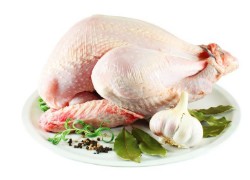 Contains about 2.3 milligrams of iron per 100 grams. Turkey is a dietary type of meat products, it is allowed to be consumed in chronic diseases of the cardiovascular system.
Contains about 2.3 milligrams of iron per 100 grams. Turkey is a dietary type of meat products, it is allowed to be consumed in chronic diseases of the cardiovascular system.
Its only drawback is not the best taste (when compared with duck or even chicken), as well as a large number of small bones and cartilage (in particular, in the hams).
Turkey may increase hemoglobin, but only slightly. It is better to eat brisket in boiled (steamed) form.
4. Chicken
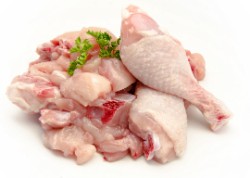 Contains only 2.1 milligrams of iron per 100 grams. But it's very Low fat content
, which allows it to be included in the diet while observing a gentle diet.
Contains only 2.1 milligrams of iron per 100 grams. But it's very Low fat content
, which allows it to be included in the diet while observing a gentle diet.
For chronic diseases of the cardiovascular system, it can also be consumed, but it is better to be boiled. Hemoglobin practically does not increase (since there are not so many amino acids in the composition).
5. Pork
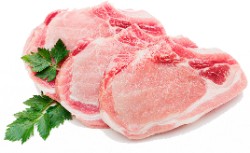 Contains only 2 milligrams of iron per 100 grams. But in its composition Lots of essential amino acids
, but such meat is considered quite heavy for the stomach.
Contains only 2 milligrams of iron per 100 grams. But in its composition Lots of essential amino acids
, but such meat is considered quite heavy for the stomach.
In diseases of the cardiovascular system, it is better to abandon it (due to the presence of a large amount of fat in the composition). If you really use it, then only in the form of boiled sausage (with a minimum fat content).
6. Veal
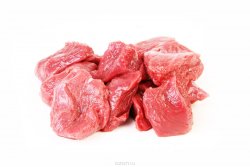 There are 3.3 milligrams of iron per 100 grams of veal meat. It is most often recommended by doctors to use it to quickly increase hemoglobin (rabbit meat is better suited, but it also costs much more).
There are 3.3 milligrams of iron per 100 grams of veal meat. It is most often recommended by doctors to use it to quickly increase hemoglobin (rabbit meat is better suited, but it also costs much more).
To get the maximum benefit, it is necessary to consume "beef with blood", that is, minimum roast . Only in this case, micronutrients and amino acids are not destroyed.
But it's better to give up fat
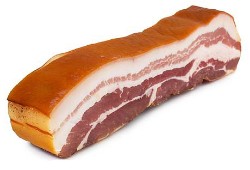 Lard contains almost no iron. There are only 0.18 milligrams of iron per 100 grams of fat (melted, in the form of lard). Moreover, fat is quite harmful for any diseases of the cardiovascular system due to the considerable amount of cholesterol.
Lard contains almost no iron. There are only 0.18 milligrams of iron per 100 grams of fat (melted, in the form of lard). Moreover, fat is quite harmful for any diseases of the cardiovascular system due to the considerable amount of cholesterol.
It is better to abandon its use in anemia or limit it to a minimum.
Table of iron content
Also check out other iron-containing products (mg per 100 grams):
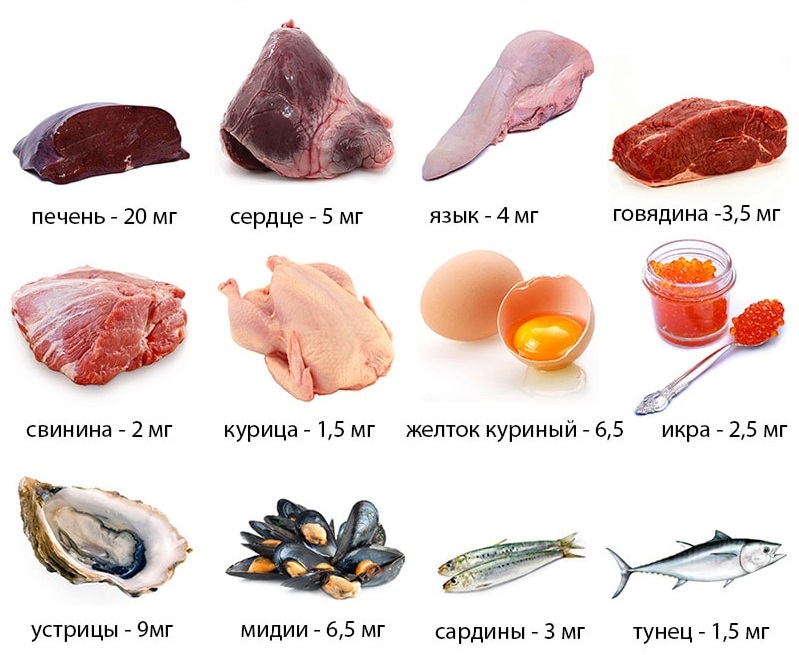
;
Features of the diet during pregnancy
Doctors recommend eating beef and rabbit meat. The latter is more preferable, since it is easier to digest (minimizing the likelihood of diarrhea and toxicosis, which happens very often in pregnant women).
How to increase hemoglobin without meat?
If for some reason you want to do without meat, doctors recommend:

- Eating foods rich in folic acid. These include spinach, walnuts . Vitamin B 9 increases the bioavailability of iron.
- Completely give up alcohol . Ethanol derivatives inhibit the functionality of the liver and intestines, which are involved in the absorption of iron.
- Drink fresh daily beetroot juice . Just 100 milliliters per day will be more than enough. The main thing is not to consume it in concentrated form (dilute with water 1 to 2).
- Include raw food in the diet buckwheat . The easiest option is to rinse it, pour kefir for 6-8 hours (for example, overnight). It will turn out to be a pretty tasty and healthy porridge.
But it's worth considering that low hemoglobin may not always indicate a lack of iron in the body. This may be a consequence of diseases of the endocrine system, so it is recommended to consult an endocrinologist beforehand.
